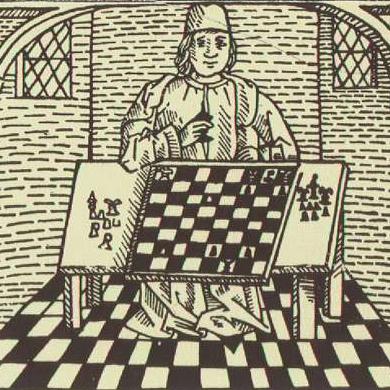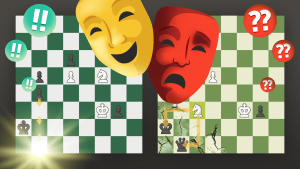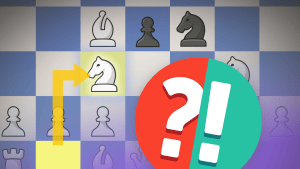
Make a Connection!
I decided to write on this subject after I saw the discussion in the comments section of last week's article where we talked about the tricky B+N checkmate. Somebody asked the question "why not Kd1 ??? what must we do after 58.Kd1 ??" Let's look at the position in question:
Indeed it looks like after the unavoidable 59...Kc2 the black king runs away from the cage. This is a very popular misconception and precisely the reason why sometimes even strong chess players cannot deliver a checkmate in this relatively simple endgame. They see that the opponent's king escapes and dismiss the whole variation even though it is the correct technique.
To avoid this serious speed bump on your way to victory, I addressed the issue in my article: "There is one trick which you must know. When you push your opponent's king from the 'wrong' corner to the 'right' corner at some point it looks like he just escapes. But this is just an illusion. The knight and the bishop create a firm barrier, so the king is still locked." After which I gave the game:
Of course this game answers the reader's question, because the position is pretty much identical to the Ivanchuk game. I expected someone to point out the correct solution:
And yet, people suggested some other solutions (and some of them were not particularly correct). Yes, when you have two extra pieces then there are many different ways to solve the problem, but why look for complicated ways when the simple solution was already described in the article?
Here we face a very interesting phenomenon which I encounter many years ago. The year was 1996 and I had a lecture followed by a simul in Madison, Wisconsin. The subject of my lecture was combinations and as an example of a combination in a very early stage of the game I used the next game:
You can imagine my amazement when one of my games in the simul reached the next position:
I just couldn't believe how it was possible for my opponent who played White in this game to fall into the combo that we discussed pretty much 30 minutes before the game. Then I realized that many people enjoy chess the same way most people enjoy art or any kind of creative activity. It is similar to many people that I personally know who go to a movie, enjoy it and a year later cannot even recollect if they watched the movie.

I guess my opponent from that game enjoyed the combinations the same way and just forgot about it 30 minutes later. My recommendation is simple: whenever you encounter a beautiful chess concept, enjoy its aestetic value first. Then ask yourself a simple question: "How can I benefit from this concept?" When I was a kid I even had a notebook where I would draw diagrams with the ideas that I could use in my games. Of course I am talking not just about opening ideas. Look for example at the next game of a young Tal:
This middlegame idea has nothing to do with the opening. Black wanted to push his 'f' pawn to effectively stop White's attack, so Tal prevented this move even if it could cost him a rook.
Now look at the next famous game of Fischer and try to find the correct move:
I hope that from now on whenever you learn a new chess idea, you will be able to recognize the pattern and use it in your own games.
Good luck!
RELATED STUDY MATERIAL
- Read GM Grigory Serper's article of last week: The Embarrassing Endgame;
- Practice the BN mate in the Computer Workout;
- Watch videos about opening traps for beginners;
- Check out more tactical patterns everyone should know.

